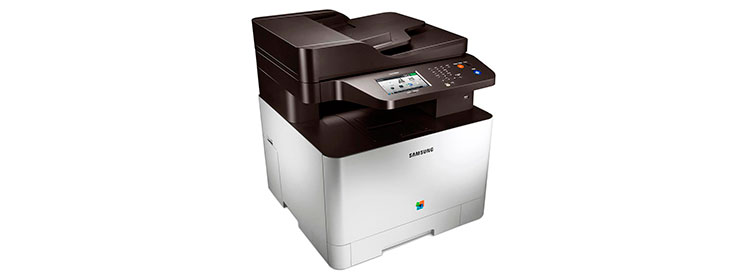It used to be that antivirus and malware protection for a computer was enough. Now even printers have become subject to malware attacks, creating another possible vulnerability on a user’s system. How can a device like a printer be a security threat, and how can you protect yourself against a “hacked” printer?
How Do Printers Get Hacked?
The more sophisticated a system, the more vulnerable it is to security breaches. Modern office printers are much more complex than their low-tech ancestors. Older desktop printers often connected only via a USB cable, while newer, business-end model printers often have their own hard drive, Internet connection, Web interface, and email capabilities. Once a device is connected to the Internet, it becomes much more vulnerable to possible attacks from without.
The threat of hacked printers first surfaced when researchers at Columbia University discovered security flaws in several HP model printers. The firmware in the printers contained vulnerabilities that could allow an outside party to infiltrate the device and give it instructions remotely.
What Are the Risks?
A hacker could change the settings on the printer, or transmit phony fax and print jobs. While that might not seem too serious, it’s only the beginning. The biggest threat to the user’s security is that a hacker could gain access to any documents that are sent to it from the printer, possibly exposing sensitive or private information. The printer could also be used to eavesdrop on the network traffic of the computer. Malware could even be installed on the computer, granting ongoing access to the device without the owner knowing anything’s wrong.
An enterprising hacker could even use a Denial of Service (DoS) attack to make the printer inaccessible or non-functional, possibly even damaging the hardware.
How Do I Protect Myself?
The easiest way to secure your printer from such attacks, of course, is to make sure it isn’t connected to the Internet or network at all. That might be fine for the average home user, but it’s not a feasible option for businesses that rely on network printing.
First, it pays to inform yourself about the device and what vulnerabilities your printer might have. The Columbia University researchers themselves admitted that while they only tested HP machines, machines of any brand could be infected in a similar fashion. Check reviews and the manufacturer’s website for your printer and see if there are any vulnerabilities or firmware updates listed.
Second, protect the printer itself as much as possible. If there is an administrative password on the machine, set it and change it every once in a while. Lock down access privileges to the printer, both physically and on the computer network, to minimize its exposure to possible attacks. Make sure your printer is protected by the network firewall.
Some printers also feature network encryption and other security measures. If your printer has such features, enable them. Keep your printer’s firmware as up-to-date as possible. A common way of protecting a printer is setting up an Access Control List, or ACL, to ensure only certain parties can access the printer at any time. The shorter that list, the fewer vulnerabilities.
No system connected to the Internet is ever 100% safe from attack, and even a machine left unplugged from the network could be infected via USB key or other physical access. The key is to be aware of this new threat, and protect yourself as much as possible.
Ron Dagus is a writer, blogger and IT expert at PrinterInks.com. Whether it’s Epson, Brother, Dell, HP, or any other leading printer brand, you can find a wide range of ink cartridges from PrinterInks.
![]() http://cmvlive.com (http://s.tt/1tpnl)
http://cmvlive.com (http://s.tt/1tpnl)








